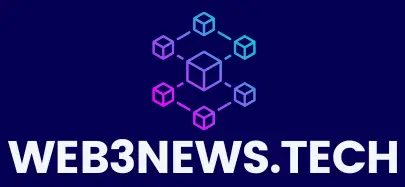In the rapidly evolving landscape of artificial intelligence, few innovations have captured the imagination of technologists and the general public alike quite like Generative Pre-trained Transformers (GPT). As we delve into the latest generative pre-trained transformer news, it’s crucial to understand the fundamentals of this technology and its wide-ranging implications.
Understanding GPT: The Basics
Before we explore the recent generative pre-trained transformer news and advancements, let’s address a fundamental question: What does generative pre-trained transformer mean, and how does GPT work?
A Generative Pre-trained Transformer is a type of artificial intelligence model designed to understand and generate human-like text. The term can be broken down into three key components:
- Generative: The model can create new, original content based on the patterns it has learned.
- Pre-trained: It is initially trained on a vast corpus of text data to develop a broad understanding of language.
- Transformer: This refers to the specific architecture of the neural network, which allows the model to process and understand context in text effectively.
GPT works by predicting the next word in a sequence based on the context provided by the previous words. During training, the model analyzes billions of words and learns the statistical relationships between them. When given a prompt, it uses this learned knowledge to generate coherent and contextually appropriate text.
Table of Contents
Recent Developments in GPT Technology
Microsoft Bing's Integration of Chat GPT
One of the most significant recent developments in the GPT space is Microsoft’s integration of chat GPT technology into its Bing search engine. But what exactly is this new feature?
Microsoft Bing now includes a chat generative pre-trained transformer, which is essentially an AI-powered chatbot built on GPT technology. This integration allows users to have more interactive and conversational search experiences. Instead of simply displaying a list of links, Bing can now engage in dialogue, answer follow-up questions, and provide more comprehensive and nuanced information.
This development represents a major shift in how search engines operate, blending traditional search capabilities with advanced AI-driven conversation. It’s a clear indication of how GPT technology is being applied to enhance everyday digital experiences for millions of users.
Recently, a study evaluated the performance of two AI models, GPT-4 and Gemini, on Japan’s First-Class Radiation Protection Supervisor Examination.
The research aimed to assess the capability of these models to solve complex radiation-related problems.
Key findings include:
- GPT-4 slightly outperformed Gemini in problem-solving accuracy.
- Both models showed weaknesses in practical applications.
- The study highlighted AI’s potential in professional certification but identified areas needing improvement for real-world readiness.
For further details, you can access the full study here.
Advancements in GPT Model Types
As the field of AI continues to progress, it’s important to understand what type of AI model GPT represents. GPT (Generative Pre-trained Transformer) is classified as a large language model (LLM) within the broader category of generative AI models.
Generative AI models are designed to create new content, whether it’s text, images, or other forms of data. What sets GPT apart is its specific focus on language tasks and its transformer architecture, which allows it to handle long-range dependencies in text effectively.
Recent developments have seen the emergence of increasingly sophisticated GPT models, each building upon the capabilities of its predecessors. These advancements have led to improvements in areas such as:
- Context understanding and retention
- Multilingual capabilities
- Task-specific fine-tuning
- Reduced biases and improved factual accuracy
The Minds Behind GPT: OpenAI’s Role
When discussing GPT, a common question often arises: “Which company developed OpenAI’s GPT (Generative Pre-trained Transformer) series?” The answer leads us to a pivotal player in the AI landscape: OpenAI.
OpenAI, an artificial intelligence research laboratory, is the organization behind this groundbreaking technology. It’s worth noting that OpenAI has a unique structure, consisting of the for-profit corporation OpenAI LP and its parent company, the non-profit OpenAI Inc. This dual structure allows them to pursue cutting-edge research while also exploring commercial applications of their technology.
Also read: Open AI Stock Investment Opportunities: What You Need to Know
The Essence of GPT: A Closer Look
To fully appreciate the impact of recent developments, it’s essential to understand what a generative pre-trained transformer is at its core. As mentioned earlier, it’s an AI model designed to process and generate human-like text. However, its significance goes beyond mere text production.
A GPT model can be thought of as a highly sophisticated pattern recognition and completion system. It doesn’t just memorize and regurgitate information; instead, it learns the underlying structure and patterns of language. This allows it to:

Source: Unsplash
- Understand context and nuance in ways that were previously challenging for AI systems.
- Generate coherent and contextually appropriate text across a wide range of topics and styles.
- Perform a variety of language tasks, from translation to summarization to question-answering, without being explicitly programmed for each task.
Recent developments have focused on enhancing these capabilities, making GPT models more accurate, versatile, and aligned with human intentions and ethical considerations.
Looking Ahead: The Future of GPT Technology
As we consider the latest generative pre-trained transformer news and developments, it’s clear that we’re only scratching the surface of its potential. Future advancements may include:
- Improved multimodal capabilities: Integrating text understanding with other forms of data, such as images and audio.
- Enhanced reasoning abilities: Developing models that can perform more complex logical and analytical tasks.
- Greater customization and control: Allowing users to fine-tune models for specific applications more easily.
- Addressing ethical concerns: Continued work on reducing biases, improving factual accuracy, and ensuring responsible AI deployment.
In conclusion, the field of generative pre-trained transformers is evolving rapidly, with new applications and improvements emerging regularly. From powering more interactive search engines to enabling sophisticated AI assistants, GPT technology is reshaping our interaction with digital systems.
As researchers and companies continue to push the boundaries of what’s possible, we can expect to see even more innovative applications of this transformative technology in the near future. Staying updated on generative pre-trained transformer news will be crucial for anyone interested in the future of AI and natural language processing.

